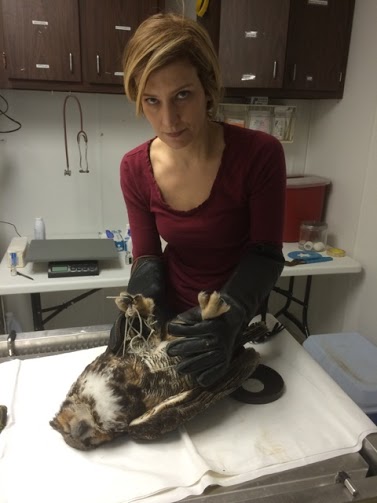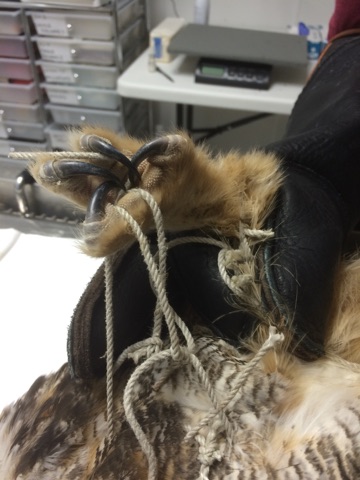By Ezra Tischler, Public Relations and Environmental Art Intern
As the seasons transition from winter to spring we are fortunate enough to witness the flora and fauna of our region busily prepare for warmer weather and new beginnings. This time of year also brings many patients to the Schuylkill Center’s Wildlife Clinic, sometimes harshly illuminating the clash between our own activities and those of the natural world. Over the weekend the Wildlife Clinic dealt with one of those clashes when a great horned owl was brought in after being tangled in a soccer net.

The owl was rescued from the net by Springfield Police, but they could only cut the net around him. When the owl arrived at the clinic he remained bound by the net’s string, wrapped around his neck, legs, and wings preventing him from flying. Michele Wellard, assistant wildlife rehabilitator at the clinic, doesn’t know how long the owl was trapped, but due to its level of dehydration she can only assume it was ensnared for quite some time.
Michele, along with clinic volunteer Dan Featherston, worked to cut the string from the owl’s body and administer subcutaneous fluids to treat the dehydration. Needless to say, the owl was not happy with these entirely foreign circumstances and the apparent indignity of being kept from flight. But, by Monday morning the great horned owl was in better spirits. He was getting more fluids, perching, and enjoying the mice provided by the clinic. His treatment means a swift and successful release back into the wild.
Unfortunately soccer nets are a constant hazard for these nocturnal hunters. A quick Google search turns up numerous results with videos and news articles detailing instances like this. In spring many owls may be expecting the arrival of eggs and new chicks, leading them to increase their hunting activity and furthering the risk of a run-in with a soccer net. Simple precautions like taking down nets when not in use could mean a great difference for these animals.
